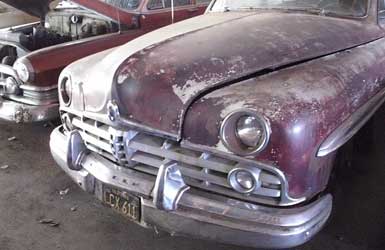
Like many words in the English language, the term “restoration” can be interpreted in many ways. However, the process of vehicle restoration should not be confused with the term restored. Restoration is a process, rather than a condition of a vehicle.
Generally, a restored vehicle is a vehicle that has been returned to a “like new” condition. This level of restoration work requires virtually every part on the vehicle to be rebuilt or replaced with new components. Considering the number of parts, the time involved and the financial investment, truly restored vehicles are in the realm of concours, museum and show vehicles. Now, there are street-driven restored vehicles, but they’re the exception rather than the rule in terms of the hobby.
The point is, most of what you see on the street in the way of restored vehicles really fall into the “street restoration” category and it’s within this category that most classic car hobbyists and enthusiasts work. Now there are many different levels of street restorations, but generally, the scope is to bring the vehicle back to an “as-new” condition, in which only parts that need replacing are changed and good original parts are retained.
As an example: Last year I purchased a very nice 1967 Mercury Park Lane from the original owner with just more than 26,000 miles showing on the odometer. The interior was immaculate, the body was super straight and overall it was a good Class 3 car. On the short side, the engine compartment was ugly, the front-end rubber was shot, resulting in the need for new tires. To top things off, a fresh coat of paint would be required to bring the car back to “as-new” condition.
The street restoration performed on this car took care of these areas and the car was brought back up to the condition of that of about a 3-4 year old vehicle. Now, areas such as the transmission, which was more than 20 years old, received only servicing. So there are some trade-offs in terms of which areas get attention and which don’t. With only 26,000 miles on the transmission, wear on internal parts would be minimal. But age and the fact the vehicle sat for long periods unused, could have been more damaging than daily wear. This is just one example, of the many considerations that you will need to make when choosing a vehicle for this type of restoration.




